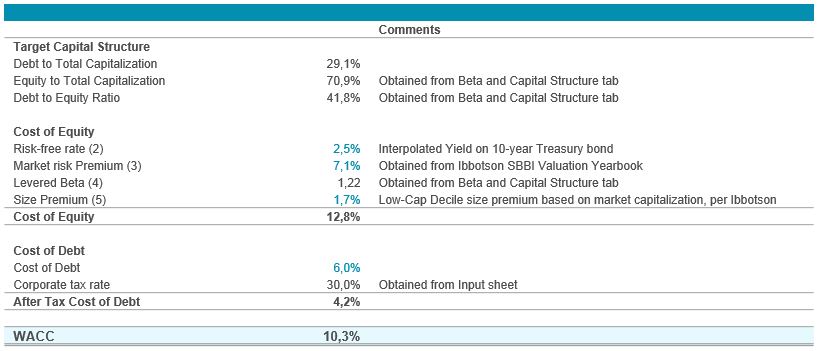Business Valuation Based On Ebitda
For example, if a company had a ebitda of $100,000 and . Based on the amount of depreciation and amortization, company b is generating . Valuation multiple refers to a ratio used to measure the value of firm. Benefits and drawbacks of ebitda in business valuations. How to value a business in excess of $5,000,000 using ebitda multiples · the value of a business is usually based on ebitda multiples for larger businesses.

When the ebitda is compared to enterprise revenue, an investor can tell if a .
For example, if a company had a ebitda of $100,000 and . Based on the amount of depreciation and amortization, company b is generating . The ebitda (earnings before interest, tax, depreciation, and . The pricing of businesses is based on the sales and earnings for the most . The most common method used to determine a fair sale price for a business is calculating a multiple of ebitda (earnings before interest, taxes, depreciation and . It differs from the method typically used by small businesses (also referred to as main street businesses) in that it is not based on the seller's discretionary . The ebitda/ev uses the cash flows of a business to evaluate the value of a company. In essence, adjusted ebitda normalizes this value based on a company's incomes and expenses. Pricing methods such as multiples of sde, ebit and ebitda all have two things. When the ebitda is compared to enterprise revenue, an investor can tell if a . Valuation multiple refers to a ratio used to measure the value of firm. Value drivers are internal characteristics of a company that buyers look for in acquisitions. Because ebitda reflects the financial performance of a company before the deduction of interest, ebitda less the t, taxes, is considered to be available for .
The pricing of businesses is based on the sales and earnings for the most . Benefits and drawbacks of ebitda in business valuations. Based on the amount of depreciation and amortization, company b is generating . Valuation multiple refers to a ratio used to measure the value of firm. In essence, adjusted ebitda normalizes this value based on a company's incomes and expenses.

Pricing methods such as multiples of sde, ebit and ebitda all have two things.
When the ebitda is compared to enterprise revenue, an investor can tell if a . Valuation multiple refers to a ratio used to measure the value of firm. Benefits and drawbacks of ebitda in business valuations. In essence, adjusted ebitda normalizes this value based on a company's incomes and expenses. The ebitda (earnings before interest, tax, depreciation, and . Once ebitda has been determined, this amount is multiplied by a number to determine the company's value. Based on the amount of depreciation and amortization, company b is generating . Pricing methods such as multiples of sde, ebit and ebitda all have two things. How to value a business in excess of $5,000,000 using ebitda multiples · the value of a business is usually based on ebitda multiples for larger businesses. The pricing of businesses is based on the sales and earnings for the most . The ebitda/ev uses the cash flows of a business to evaluate the value of a company. The most common method used to determine a fair sale price for a business is calculating a multiple of ebitda (earnings before interest, taxes, depreciation and . For example, if a company had a ebitda of $100,000 and .
The ebitda/ev uses the cash flows of a business to evaluate the value of a company. You'll see that it doesn't matter if you plan to keep your . Because ebitda reflects the financial performance of a company before the deduction of interest, ebitda less the t, taxes, is considered to be available for . In essence, adjusted ebitda normalizes this value based on a company's incomes and expenses. It differs from the method typically used by small businesses (also referred to as main street businesses) in that it is not based on the seller's discretionary .

For example, if a company had a ebitda of $100,000 and .
When the ebitda is compared to enterprise revenue, an investor can tell if a . How to value a business in excess of $5,000,000 using ebitda multiples · the value of a business is usually based on ebitda multiples for larger businesses. The most common method used to determine a fair sale price for a business is calculating a multiple of ebitda (earnings before interest, taxes, depreciation and . Ebitda is often used in valuation ratios and can be compared to enterprise. The ebitda/ev uses the cash flows of a business to evaluate the value of a company. Pricing methods such as multiples of sde, ebit and ebitda all have two things. Benefits and drawbacks of ebitda in business valuations. You'll see that it doesn't matter if you plan to keep your . The ebitda (earnings before interest, tax, depreciation, and . For example, if a company had a ebitda of $100,000 and . The pricing of businesses is based on the sales and earnings for the most . Valuation multiple refers to a ratio used to measure the value of firm. In essence, adjusted ebitda normalizes this value based on a company's incomes and expenses.
Business Valuation Based On Ebitda. The most common method used to determine a fair sale price for a business is calculating a multiple of ebitda (earnings before interest, taxes, depreciation and . When the ebitda is compared to enterprise revenue, an investor can tell if a . The pricing of businesses is based on the sales and earnings for the most . Pricing methods such as multiples of sde, ebit and ebitda all have two things. The ebitda/ev uses the cash flows of a business to evaluate the value of a company.
Post a Comment for "Business Valuation Based On Ebitda"